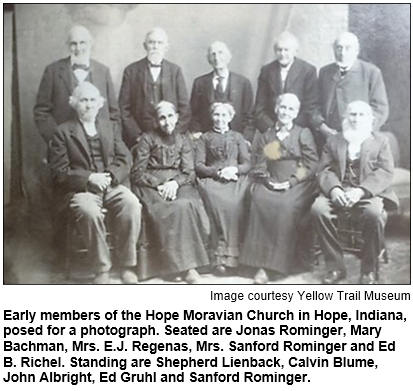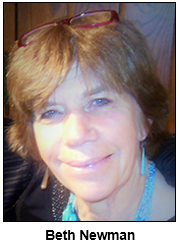Jun 18, 2021
|
Saturdays, noon to 1 p.m. ET on WICR 88.7 FM. |
|
|
June 12, 2021 Moravian heritage of Hope, Indiana - EncoreClick here to listen to the podcast.
Columbus, Ind., in Bartholomew County, south of Indianapolis, is known as a "Modernist Mecca" for its striking examples of midcentury architecture, which draw visitors from far and wide. The nearby small town of Hope in the county's northeast Haw Creek Township is much less well known, but has its own distinctive cultural heritage, which we explore in this encore of a show that originally aired in September of 2016. The show is guest-hosted by Hoosier History Live producer Molly Head. Hope was founded in 1830 by Protestant Moravian Martin Hauser. Like many persecuted religious minorities seeking autonomy and religious freedom, Moravians moved into different parts of Europe and on to America, where they settled mostly in North Carolina and Pennsylvania. German was the language spoken by Moravians coming to America.
Some early residents of Hope were descendants of the settlers of the ill-fated Moravian Mission that operated near Anderson, Ind., along the White River, from 1801 to 1806. The mission's purpose was to bring Christianity to the Native Americans in the area. The mission members and its Native American "converts" were met with strong resistance by local tribes, and in particular by The Prophet, or Tenskwatawa, the brother of Shawnee leader Tecumseh. The Prophet, full of his own religious zeal, carried out "witch hunts" against converted Native Americans, and the Moravian missions in the area eventually disappeared.
Molly's guests include two retired Hope elementary school teachers who also are great storytellers: Barb Johnson and Beth Newman. Both Barb and Beth have taught 4th-grade Indiana history and also have played the role of schoolmarms at the Simmons School, which is a brick one-room schoolhouse that was moved from its original location in the country to the back yard of the Hope Elementary School in 1989. Guests Barb and Beth are also involved in the Yellow Trail Museum, the history museum located on the town square. Much of downtown Hope and surrounding residential areas is listed on the National Register of Historic Places. Editor's note: Since the original airing of this show in 2016, Barb Johnson has passed away. |


 The
The  Since the 1830s, Hope Moravians have also gathered
in
Since the 1830s, Hope Moravians have also gathered
in